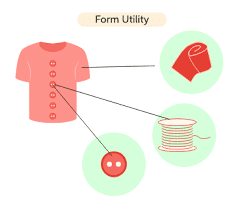Customer centricity means that the employees of a company can understand and meet the wants of its customers. For customer satisfaction, loyalty, and word-of-mouth advertising, customer centricity requires that all choices about delivery be made with the customer in mind. This article talks about the customer-centricity marketing approach, culture, and examples; it also talks about how to create a customer-centric strategy.
Overview
“Customer centricity” is a way of running a business that puts the happiness of the end users of the company’s products or services at the top of the list. Customer-centric businesses offer complete product solutions so they can meet the wants of their customers. Because of this, businesses in the private sector make more money, their employees work harder, and their customers are happier.
Nonprofits and states can work together to reach their goals by making themselves stronger, more sustainable, and better aligned. Customer centricity is a way of thinking that encourages companies to do the following things that are focused on their customers and end-users.
#1. Taking Care of the Customer
Organizational unity and a focus on specific groups of users.
#2. Be Like a Customer
Spending time finding out what customers really want instead of just adding features they ask for. They try to put themselves in the shoes of their clients and think about what they need.
#3. Putting Together Whole Product Solutions
Making sure that both the first-time customer experience and the ongoing customer experience are always getting better and getting closer to the best answer, and coming up with a full solution for the user’s needs.
#4. Knowing How Much a Customer Is Worth Over Time
Focusing less on the quick sale and more on building relationships based on a deep understanding of the value you bring to the customer
Customer Centricity Marketing
Customer-centricity marketing requires that you know who you’re trying to reach. Personalizing messages, services, goods, and information helps give the customer what they want. A plan that focuses on the customer can be used for more than just advertising. It’s a good way that a lot of successful businesses use.
When people are happy with a company’s goods or services, they are more likely to buy from that company again and tell other people about it. When it comes to promoting, selling, and other business-related tasks, customer-centric marketing means always putting the customer’s needs and wants first. Making your first customer-centricity marketing plan approach with the customer in mind doesn’t have to be as hard as it seems. The first step is:
#1. Engage the Top Management
If upper management agrees with a new plan, it’s more likely to work. At every point of contact, a leader who puts the customer first will inspire others to do the same. To win over upper management, you should hold regular meetings to tell executives about customer-centered marketing, talk about upcoming projects, and come up with new ways to raise brand recognition.
#2. Every Time You Talk to a Customer, Make It Worth It
Customers (or possible customers) could be at any point in their relationship with your business, so it’s important to make a good impression every time you talk to them. Customers should be excited about your business and its products and services at every step of the buying process, from the first contact on social media to the final checkout.
#3. Learn Who Your Clients Are
You can learn more about your customers by doing any of the following:
- Ask customers what they think about the quality of the service or product, what the company does well, what it could do better, and how they most often connect with the brand.
- Interview current and former clients in-depth and one-on-one to find out what they think of your business. Another choice is to ask what changes would have kept them as clients.
- With the help of analytics data, you can keep track of what customers do.
- If you want to know what people are saying about your business online, you can check social media or set up Google Alerts.
- Read texts and listen in on phone calls to find out what clients have to say.
- What a customer-focused marketer cares about most
- Marketers who put the customer first never lose sight of the bigger picture.
#4. Orders Are Carried Out
Even if a customer doesn’t buy your products, customer-centric marketing is about giving them the tools they need to reach their full potential.
#5. Taking a Stand for Clients
Advocate marketing is an important part of marketing teams that focus on the customer. They work hard to find out what their clients need from them, and they speak up for them both inside the company and in the market.
#6. Long-Term Plans
In many marketing teams, success is only measured by how many leads are sales-ready. This could lead to short-term plans to get more people to come in, but these plans rarely work. They might help your sales team meet possible clients, but they won’t make people want to buy from you again and again.
Customer Centricity Approach
Simply put, customer-centric tactics focus on what the customer wants. In marketing terms, this means creating experiences on purpose that make customers feel satisfied. Brands did very well when they used these strategies.
When making important business decisions, businesses that use a customer-centric method put their client’s needs first. Because of this, businesses make sure that their marketing and internal processes are geared toward making customers happy. Putting the customer first is a big competitive edge if and only if it makes customers more loyal. So, the way a brand treats its customers is what makes it stand out to the public.
Businesses choose a customer-centered approach for a number of reasons, but the most important is that it’s hard to get new clients. Most clients will compare your business to others that offer similar services or goods unless you’re doing something completely new.
Getting used to putting the customer first takes time. It may be important to change the way the company thinks and teach employees to put customers first. Start with the customer-centricity marketing culture approach to improve your relationships with customers and grow your business.
#1. Be Kind and Helpful to Your Customers
Many customers think that some companies don’t put much thought into customer service. But it could decide whether or not a customer comes back.
#2. Ask Your Customers What They Think
Listening to what your customers say and suggest can tell you a lot about how they feel about different parts of your business. You can use this information to improve your goods, services, and internal processes to make sure your customers are happy. Most importantly, it can help you build stronger relationships with the people you want to reach.
#3. Use AI to Improve the Way You Talk to Your Clients
AI can help businesses that can’t afford to have people ready 24/7 or hire more agents during busy times.
#4. Keep Your Present Clients Happy First
It makes more financial sense to put money into keeping present customers happy than to try to find new ones. Customers who have bought from you before are most likely to buy from you again, spend more overall, and tell their friends and family about you. If you want to keep more customers, you should think about the whole customer process.
#5. Make a Business That Cares About Its People
Make sure that everyone in the company, from the top leaders to the people who answer the phones, is focused on the customer. Add it to the stated goals and objectives of your company.
#6. Change Your Files
Make sure that everyone in the company has access to standardized, high-quality info. Statistics are often misunderstood and used in the wrong way. Without a physical representation, it will be hard for workers to understand and use the information.
#7. Record Comments From Buyers
Customers should be asked for their thoughts and suggestions, which should be read and taken into account when making important business choices. Every customer doesn’t have to be happy. You will be able to tell if someone is being too critical. It’s important to think about what a lot of clients say, especially if they all seem to have the same worries and ideas.
#8. Think Ahead
Having regular customers is more valuable than making one sale at a time. If you take the time to get to know your customers, you can make them feel like more than just a number. Customers will be loyal to your business and stay with you if you stay in touch with them and make unique offers based on what you know about them.
Examples of Customer-Centricity
In customer-centric selling, building relationships with customers is more important than using aggressive sales tactics. In a similar way, customer-centric service focuses on building real relationships with customers within a service-oriented support role. Here are some examples of putting the customer first.
#1. Stitch Fix
Stitch Fix is one of the most interesting cases of putting the customer first. The company gets to know its customers by giving them a customized style survey. This is how they find out what types, colors, brands, and price ranges of clothes the customer likes. You don’t have to buy anything, and you can send back anything you don’t want and get your money back in full. The problem spots have been found and fixed.
#2. Wayfair
Wayfair has more than eight million things for sale, from furniture and home decor to kitchen gadgets and garage supplies. There are 37,173 different kinds of coffee mugs, and that doesn’t even count differences in size, color, or material. Without putting the person first, the process gets hard and complicated.
#3. Hilton
Hilton has more than 971,000 guest rooms in 6,110 hotels in 119 countries and territories. Every year, 178 million people stay in its hotels. Even with these shocking numbers, the business has focused on the customer. The main reason for this is the Hilton Honors guest loyalty program, which has more than 115 million users.
How to Create a Customer-Centric Strategy
The traditional way of marketing has been replaced by a focus on the customer. The attention is on the people who are most likely to buy the product. So, you need to know if the agency or marketer you’re thinking about is basing their conclusions on your own ideas or those of your customers.
Customer-centered business practices aim to give customers a great experience and build strong relationships with them. By putting the customer first, your business can better meet the wants and needs of its clients. The following is how to create a customer-centric strategy below:
#1. Hire People With the Goal of Customer Satisfaction in Mind
Customers see the business through its employees, and the way employees treat customers has a direct effect on how satisfied customers are. No matter the job, it’s important to hire people who know how important it is to put the client first.
#2. Focus On Your Connections
Customers are not numbers that can be added up and looked at in a profit and loss account. They are real people, and when everyone works together for the good of all, everyone wins.
#3. Allow People to See Information About Clients
To switch to a customer-centric approach, you must have centralized access to customer data and information. Customer relationship management software can help everyone work together to give better customer service.
#4. The Link Between Company Principles and Customer Satisfaction Isn’t There
If employees can see how their work affects customers, they will be more involved in a customer-centered approach. Real-time data can be used to prove how well different customer service methods work, like those that cut down on customers’ wait times or make it easier for them to switch between services.
#5. CX Strategy Definition
How you handle the customer experience should be based on your brand and business goals. Customers will have certain expectations for your brand, which you will explain in your brand strategy. Your customer experience plan will explain how you will meet those expectations.
Customer Centricity Culture
The following is the strategy or approach companies can take to create or make their culture more customer-centric:
#1. Tell Everyone About What Customers Have to Say
To fully embrace the customer-centricity culture, every member of the staff needs to know a lot about the company’s clients.
#2. Link the Ideals of the Company to How Happy Customers Are
Organizations should make a link between their culture and how it affects their customers and keep track of it. This will give managers the motivation and tools they need to create a customer-focused culture that affects results.
#3. Let the Customer Figure Out How to Pay For Their Own Compensation
Companies should use how they pay their employees to show that they care about their customers.
#4. Use How You Feel About the Person to Help Them
Empathy is one of those buzzwords that sounds good in theory, but businesses rarely use it in practice. In its simplest form, customer empathy means being aware of how a customer feels and being able to meet that person’s wants.
What Are the Key 4 Steps of Customer Centricity?
By following these four rules, your business will build a strong, future-proof base that puts the customer first.
- Pay attention to your business.
- Share information about clients with other teams.
- Make it easy for people to get in touch with you however they want.
- Get feedback from clients and react to it.
What Is the Goal of Customer Centricity?
“Customer centricity” is a way of running a business that puts the happiness of the end users of the company’s products or services at the top of the list. Customer-centric businesses offer complete product solutions so they can meet the wants of their customers. Customer-centered business practices aim to give customers a great experience and build strong relationships with them.
What Are the Key Elements of Customer Centricity?
A customer-focused mindset is built on the following:
- Communication.
- Skills.
- Accountability.
- Systems.
What Is the Golden Rule for Customer Centricity?
Even though there is a lot of talk about customer service these days, it all comes down to the Golden Rule: “Treat others as you would want to be treated.”
What Is Being Customer Centricity Important?
Putting the customer first is important because it can lead to better relationships with customers, higher customer retention rates, and more suggestions from current customers.
Conclusion
A customer-centered way of running a business puts customer happiness first, both before and after a sale. By putting the client at the center of your business and using CRM to keep track of all your contacts with them, you can learn everything you need to know about them. With this information, you can help your business.
- WHAT IS CUSTOMER SUPPORT: Definition, Types, and Benefits
- How Customer Support Can Increase Customer Satisfaction
- CUSTOMER FEEDBACK: The Only Guide You Will Ever Need
- WHAT IS CUSTOMER SERVICE ASSOCIATE: Meaning, Duties, Salary & Guide
- Customer Service Representative Salary in 2023
- BRAND EXPERIENCE: What Is It & Why Does It Matter?
- WHAT IS IMC: All to Know About Integrated Marketing Communications.
- BRAND EXPERIENCE vs CUSTOMER EXPERIENCE: Whats The Difference?
- HAPPY EMPLOYEES: 10 Proven Ideas






